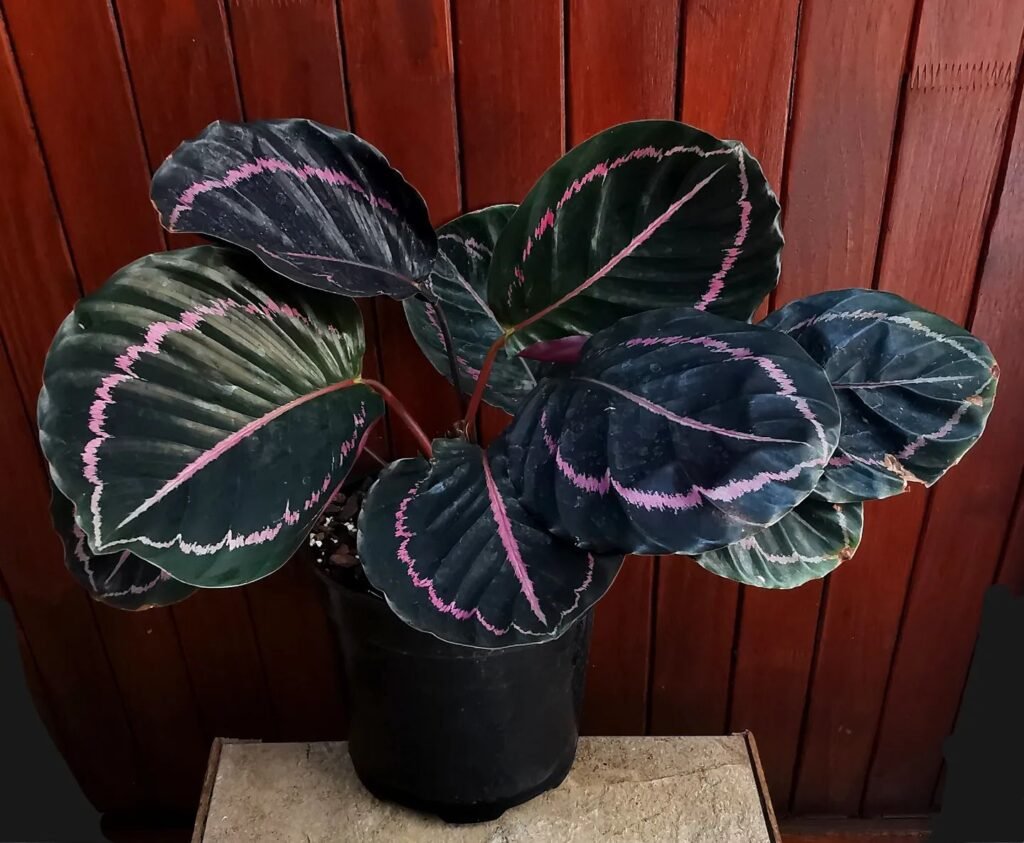Hello there! Are you a plant lover like me? If so, I’m sure you’ll be excited to learn about Calathea Roseopicta, also known as Rose Painted Calathea. This stunning house plant is a favorite among UK gardeners, and it’s easy to see why. With its intricate patterned leaves in shades of green and burgundy red undersides, it adds a touch of tropical beauty to any indoor space.
But here’s the thing, Calathea Roseopicta is not your ordinary houseplant. Being native to tropical rainforests, it requires specific care to thrive in our UK homes. Lucky for you, I’m here to provide you with all the tips and tricks you need to keep your Calathea Roseopicta flourishing.
From finding the perfect spot for it to understanding its light and water requirements, I’ve got you covered. We’ll also talk about fertilizing, repotting, pruning, and even propagating Calathea Roseopicta. By the end of this article, you’ll be equipped with all the knowledge you need to create a thriving indoor oasis with this beautiful plant.
Appearance of Calathea Roseopicta


Calathea Roseopicta, also known as Rose Painted Calathea, is a stunning plant that boasts a captivating appearance. Its leaves are reminiscent of a work of art, with beautifully intricate patterns that resemble brushstrokes. The foliage of Calathea Roseopicta comes in a variety of shades of green, creating a visually striking display.
One of the standout features of Calathea Roseopicta is the burgundy red undersides of its leaves. This vibrant color adds a touch of elegance and sophistication to the plant’s overall appearance. Whether displayed on a windowsill, in a home office, or as part of an indoor garden, the tropical foliage of Calathea Roseopicta is sure to make a statement.
 The Calathea Roseopicta, performs a fascinating dance. It opens its leaves with the morning light and closes them come nightfall, a behaviour known as nyctinasty. This daily movement is not just a visual delight but also a clever adaptation for survival in its native tropical forests.
The Calathea Roseopicta, performs a fascinating dance. It opens its leaves with the morning light and closes them come nightfall, a behaviour known as nyctinasty. This daily movement is not just a visual delight but also a clever adaptation for survival in its native tropical forests.
Light Requirements for Rose Painted Calathea
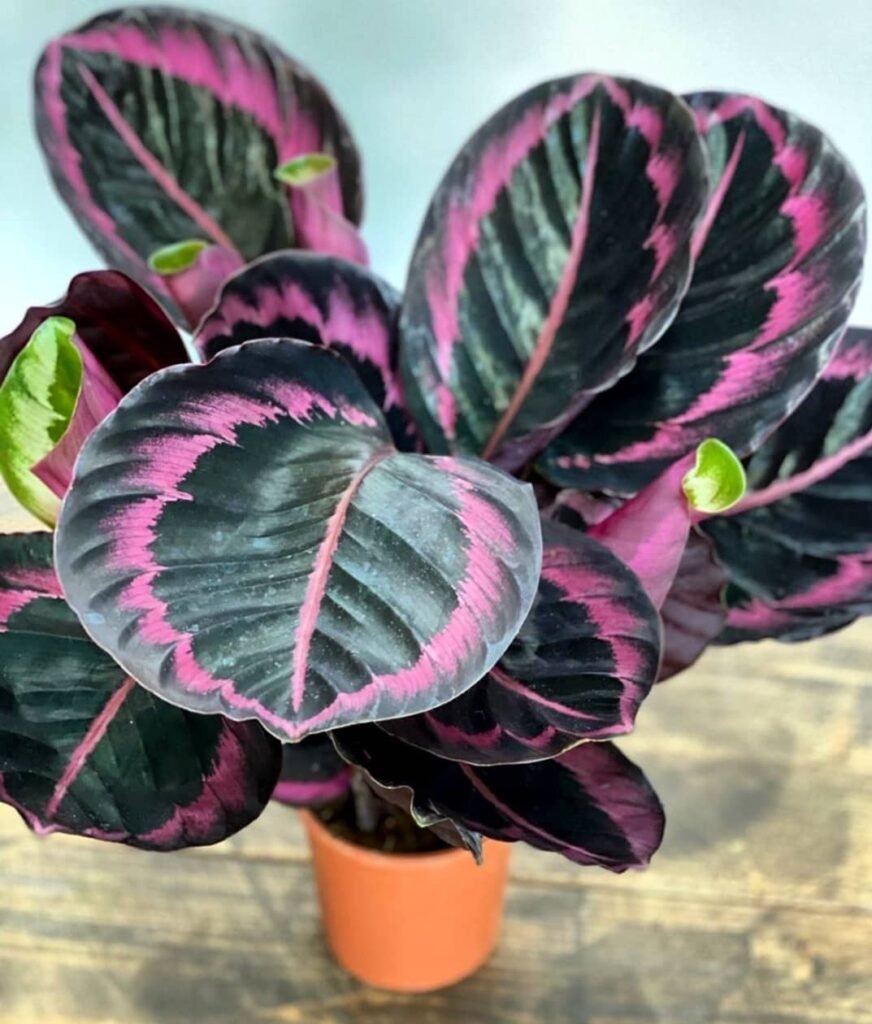
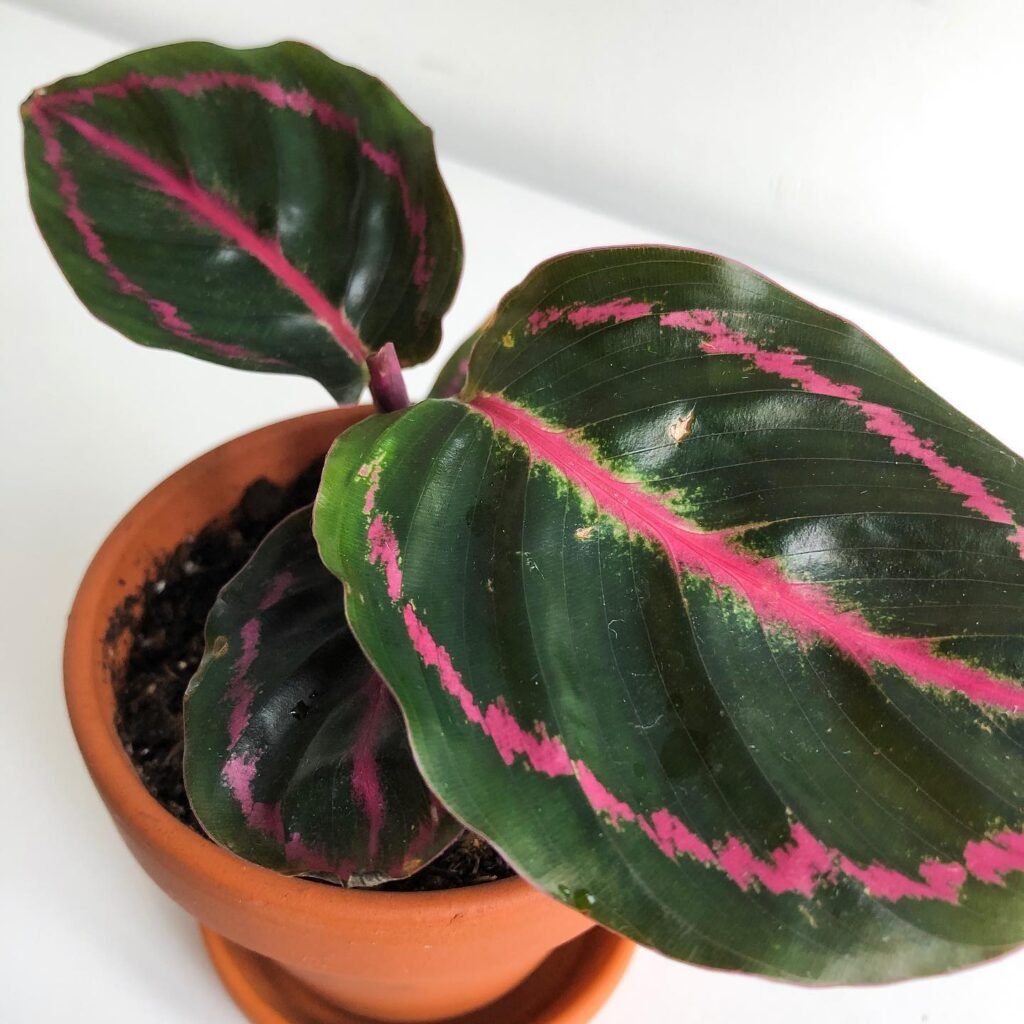
Calathea Roseopicta, commonly known as Rose Painted Calathea, requires specific light conditions to thrive indoors. Providing the right amount of light is crucial for maintaining the plant’s health and vibrant foliage.
To ensure the optimal growth of Calathea Roseopicta, it is best to place it in a spot that receives bright but indirect light throughout the day. Bright, filtered light replicates the plant’s natural habitat in tropical rainforests, allowing it to photosynthesize and thrive.
Avoid placing the Calathea Roseopicta in direct sunlight, as this can scorch the delicate leaves and cause damage. Instead, choose a location where the plant is shielded from direct sunrays, such as near a north or east-facing window.
One of the advantages of Calathea Roseopicta is its ability to tolerate low light conditions. This makes it an ideal choice for areas with less natural light, such as offices or rooms with small windows. However, even in low light conditions, it is essential to ensure that the plant still receives some brightness to maintain its overall health.

Watering Tips for Calathea Roseopicta


Properly watering your Calathea Roseopicta, also known as Rose Painted Calathea, is essential for promoting its health and vibrant foliage. Follow these watering tips to ensure your plant thrives:
- Keep the soil consistently moist: Calathea Roseopicta prefers moist soil, but be careful not to overwater. Check the moisture level regularly by pressing your finger about an inch into the soil. If it feels dry, it’s time to water.
- Avoid soaking wet conditions: While it’s important to keep the soil moist, make sure it doesn’t become soggy or waterlogged. Excessive water can lead to root rot and other issues. Allow the top few inches of soil to dry out slightly between waterings.
- Use filtered or distilled water: Calathea Roseopicta is sensitive to the chemicals in tap water, such as chlorine and fluoride. To avoid potential damage, consider using filtered or distilled water for watering.
- Maintain humidity: Calathea Roseopicta thrives in a humid environment. Increase humidity levels by misting the leaves daily with filtered water or placing the plant on a tray filled with moist pebbles. This helps to mimic the tropical conditions it prefers.

Fertilizing and Soil for Calathea Roseopicta


Proper fertilizing and soil management are essential for the health and growth of Calathea Roseopicta, also known as Rose Painted Calathea. To ensure optimal plant development, it is recommended to follow these guidelines:
Fertilizing
During the growing season, it is important to regularly fertilize Calathea Roseopicta to provide it with the necessary nutrients. Using a balanced fertiliser every couple of months will help support the plant’s growth and overall well-being. This balanced fertiliser should contain a mix of essential plant nutrients such as nitrogen (N), phosphorus (P), and potassium (K). It is advisable to follow the manufacturer’s instructions for dosage and application.
Soil
Calathea Roseopicta prefers a well-draining soil to prevent waterlogged conditions that can lead to root rot. A peat-based compost is ideal for this plant as it provides the necessary moisture retention while ensuring good drainage. To create the perfect soil mix for Calathea Roseopicta, combine soil-based compost with perlite in a 2:1 ratio. The perlite helps improve drainage and aeration while the compost supplies organic matter to nourish the plant’s roots.
When repotting Calathea Roseopicta every couple of years, it is essential to use the right soil mix to support its growth. Gently remove the plant from its current pot, shake off excess soil, and place it in a slightly larger pot with the fresh compost mix. Be careful not to bury the plant too deep, as this can hinder its growth. Ensure that the soil is well-settled around the roots and water thoroughly after repotting.

Pruning and Maintenance for Rose Painted Calathea
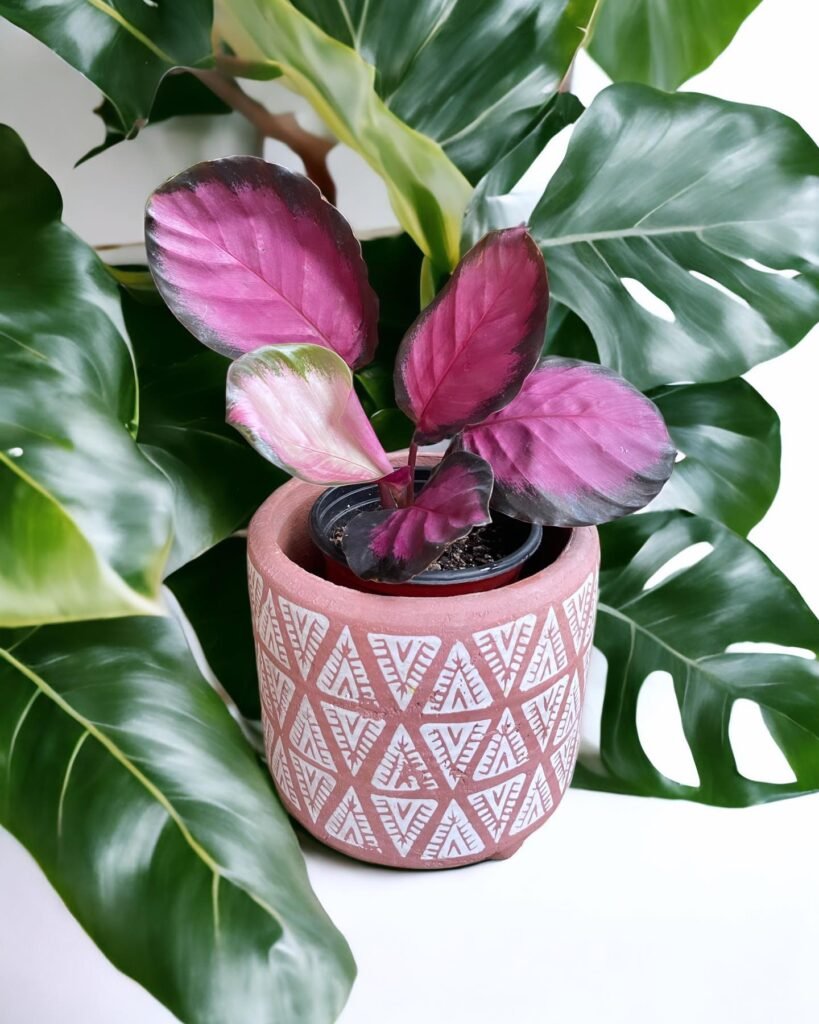
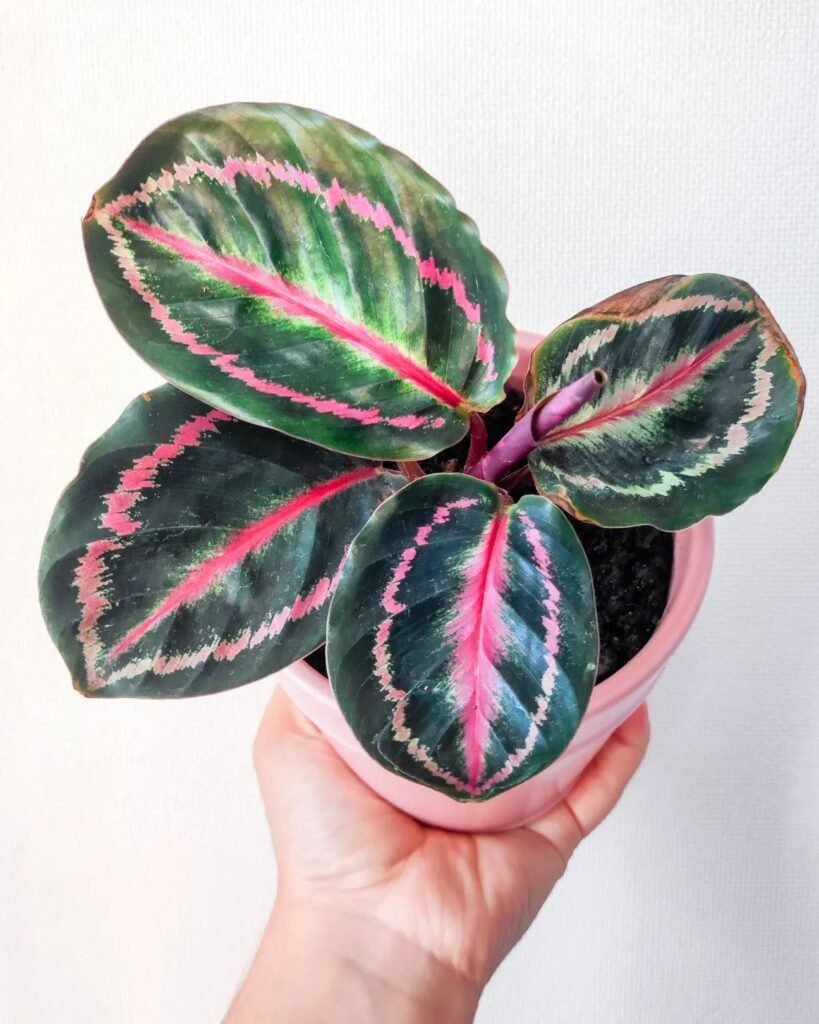
Regular pruning and maintenance play a crucial role in keeping your Calathea Roseopicta, also known as Rose Painted Calathea, healthy and visually appealing. By following a few simple steps, you can ensure that your plant thrives and continues to beautify your indoor space.
One important aspect of maintenance is removing dead or yellowing leaves from your Calathea Roseopicta. By doing so, you promote new growth and prevent the spread of diseases. Simply locate any dead or yellowing leaves and gently remove them from the plant.
While Calathea Roseopicta does not typically require extensive pruning, occasional trimming of leggy or overgrown stems can help maintain a compact and attractive shape. If you notice any stems that are growing too long or are becoming too bushy, carefully trim them back to maintain a well-balanced appearance.
In addition to pruning, wiping the leaves of your Calathea Roseopicta occasionally can greatly enhance its overall appearance. Dust can accumulate on the foliage, dulling its vibrant colors. Use a soft, damp cloth to gently wipe down the leaves and remove any accumulated dust, allowing the intricate patterns and colors to shine through.
Maintenance Tips for Rose Painted Calathea:
- Regularly remove dead or yellowing leaves to promote new growth and prevent diseases.
- If needed, trim leggy or overgrown stems to maintain a compact shape.
- Wipe the leaves with a damp cloth to remove dust and restore their vibrant colors.


Propagating Calathea Roseopicta (Rose Painted Calathea)
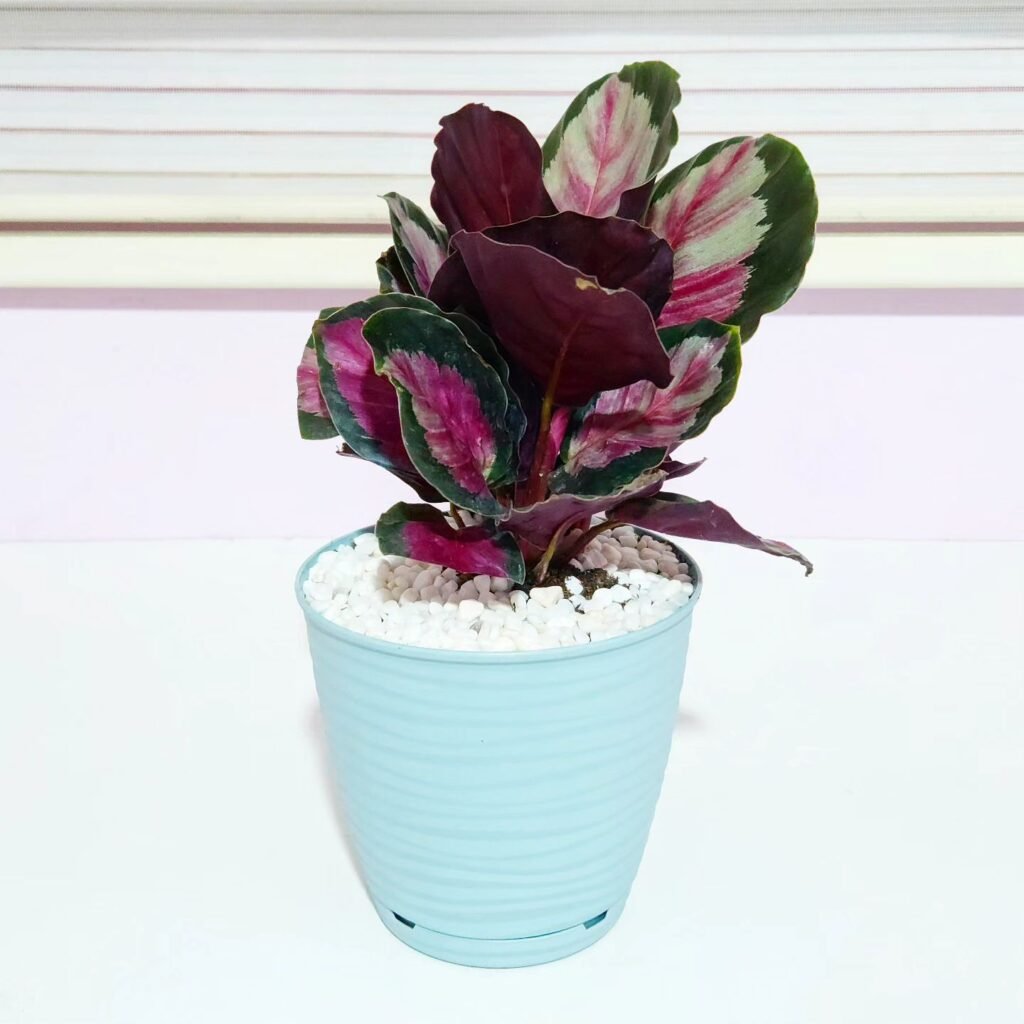

One of the great things about Calathea Roseopicta, also known as Rose Painted Calathea, is that it can easily be propagated through division. This means you can create new plants from the existing ones, allowing you to expand your collection or share with friends.
When it’s time to repot your Calathea Roseopicta, start by gently separating the clumps of the rootball. Take care to ensure that each division has a portion of the root system attached. This will give the new plant the best chance of establishing itself.
Once you have divided the plant, it’s time to repot the divisions. Choose slightly larger pots and fill them with fresh compost. A well-draining peat-based compost mixed with perlite is ideal for Calathea Roseopicta.
When repotting, make sure to position the divisions in the pots, ensuring that the roots are covered with soil. Gently pat down the soil around the plants to secure them in place.
Now comes the important part – providing proper care for the propagated plants. They will need adequate watering, light, and humidity to encourage root establishment and new growth. Treat them just as you would treat adult Calathea Roseopicta plants.
- Water the propagated plants regularly, keeping the soil moist but not waterlogged.
- Place them in a spot with bright, filtered light, avoiding direct sunlight.
- Consider misting the leaves or using a pebble tray to increase humidity levels.

Repotting Tips for Calathea Roseopicta
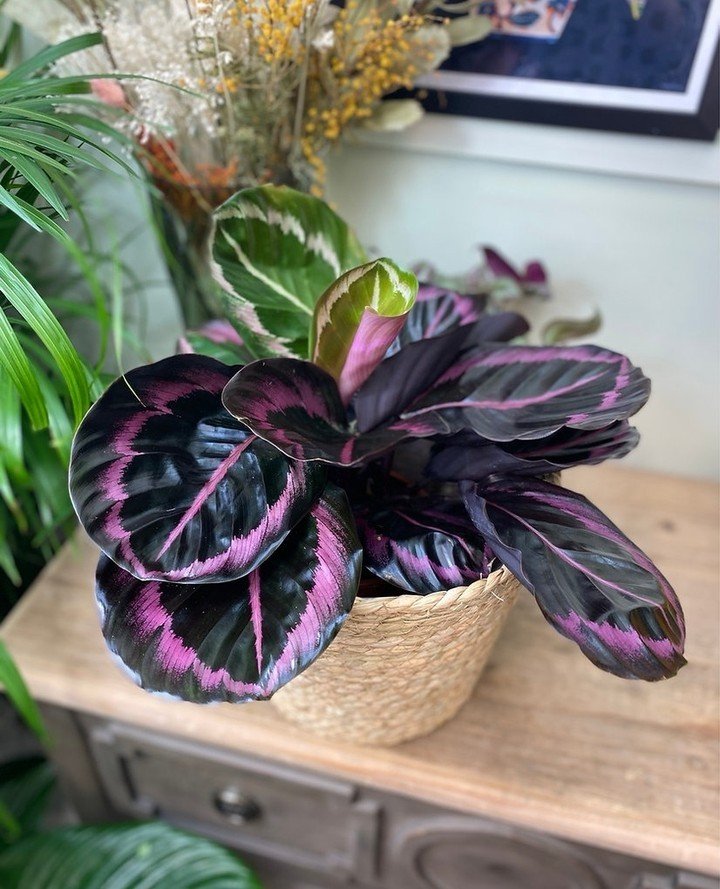

Repotting Calathea Roseopicta, also known as Rose Painted Calathea, is an essential task to ensure the plant’s health and growth. It is recommended to repot the plant every couple of years, preferably in the spring when it is actively growing. Here are some tips to help you successfully repot your Calathea Roseopicta:
- Choose the right soil mix: When repotting, opt for a well-draining soil mix that provides good moisture retention. A mixture of peat-based compost combined with perlite is ideal for Calathea Roseopicta. This blend allows excess water to drain away while retaining enough moisture for the plant’s roots.
- Select a slightly larger pot: When choosing a new pot for your Calathea Roseopicta, go for one that is slightly larger than the current pot. This will provide enough space for the roots to grow and prevent the plant from becoming root-bound. An increase in pot size of about 1-2 inches in diameter should be sufficient.
- Prepare the plant for repotting: Before repotting, gently remove the Calathea Roseopicta from its current pot, taking care not to damage the roots. Gently loosen the rootball with your fingers or a small gardening tool to promote better root growth in the new pot.
- Place the plant in the new pot: Once the roots have been loosened, carefully place the Calathea Roseopicta in the new pot, ensuring that the rootball is centered. Fill the remaining space in the pot with the well-draining soil mixture, gently firming it around the roots.
- Water and settle the plant: After repotting, give the Calathea Roseopicta a thorough watering to help settle the soil and remove any air pockets. Allow the excess water to drain away, and place the plant in a suitable location with the right lighting conditions.
 The Calathea Roseopicta has leaves with a unique purpose. The dark purple underside deters herbivores, while its patterned top absorbs low light in its dense jungle floor home, showcasing nature’s ingenuity.
The Calathea Roseopicta has leaves with a unique purpose. The dark purple underside deters herbivores, while its patterned top absorbs low light in its dense jungle floor home, showcasing nature’s ingenuity.
 Calathea is Greek for ‘basket’, hinting at the plant’s flower shape. Truly a piece of living art!
Calathea is Greek for ‘basket’, hinting at the plant’s flower shape. Truly a piece of living art!
Helpful Videos about Calathea Roseopicta (Rose Painted Calathea)
I stumbled upon some insightful videos that focus on caring for the Maidenhair Fern, also known as Adiantum raddianum. These guides are packed with practical tips and straightforward advice, designed to help even the most inexperienced gardeners succeed in nurturing this delicate plant. Whether you’re new to gardening or looking to add this fern to your collection, these videos are a valuable resource.
- Calathea Dottie & Calathea Roseopicta Rosy Plant Care
FAQ about Calathea Roseopicta (Rose Painted Calathea)

Curious about how to look after your Calathea Roseopicta? You’re in the right place! I’ve compiled all the crucial questions to assist you in caring for your plant effortlessly. From nailing the perfect watering schedule to tackling common issues, rest assured, you’re well-supported.
Calathea Roseopicta thrives in temperatures between 18°C to 24°C. In the UK’s variable climate, it’s vital to keep your plant away from cold draughts in winter and excessive heat in summer.
Water when the top inch of soil feels dry, typically once a week. However, this can vary with indoor temperatures and seasons. In winter, you might water less frequently.
Yes, it prefers high humidity, ideally above 60%. In the drier UK homes, especially during winter, consider using a humidifier or placing the pot on a pebble tray filled with water to increase moisture around the plant.
A well-draining, peat-based potting mix is ideal. You can create a mix using two parts peat and one part perlite to ensure proper drainage and aeration.
It’s best kept indoors due to its need for consistent warm temperatures and humidity. If placed outside during summer, ensure it’s in a shaded, protected area and brought in before temperatures drop.
Leaf curling can indicate under-watering or low humidity. Check the soil moisture and consider increasing the humidity around your plant.
Propagation is typically done by division during repotting. Gently separate the roots into sections, ensuring each has a part of the root system, and pot them separately.
Repot every 2-3 years or when the roots outgrow the current pot. Choose a pot only slightly larger than the previous one to avoid overwatering issues.
Brown tips can be a sign of low humidity, tap water with high fluoride or chlorine, or over-fertilization. Try using filtered water and ensuring adequate humidity.
No, it’s considered non-toxic to cats and dogs, making it a safe choice for pet owners.
Spider mites, mealybugs, and aphids can be common. Keep an eye out for these pests and treat them promptly with insecticidal soap or neem oil.
Yes, bathrooms often have higher humidity, which Calathea Roseopicta loves. Just make sure it receives enough indirect light, either naturally or with artificial plant lights.
Gently wipe the leaves with a damp cloth every few weeks to remove dust and help the plant absorb more light. This also prevents pest infestations.
I hope this FAQ has provided clarity on looking after your Calathea Roseopicta, or Rose Painted Calathea. If you’ve got more questions, please do leave them in the comments. I’m here to assist you.
Happy gardening! 🪴

